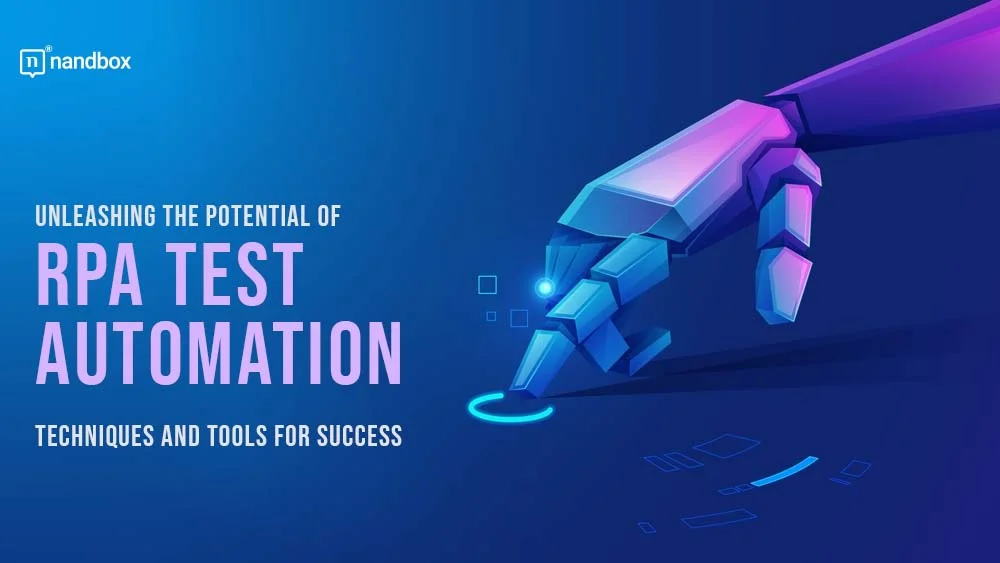Unleashing the Potential of RPA Test Automation: Techniques and Tools for Success
In today’s rapidly evolving technological landscape, businesses constantly seek innovative ways to streamline processes and boost efficiency. Robotic Process Automation has emerged as a game-changer, automating repetitive tasks and liberating human resources for more strategic activities. One area where Robotic Process Automation is proving its worth is in test automation. Delve into the techniques and tools that unlock the potential of rpa for successful test automation.
Understanding Test Automation: A Paradigm Shift
Traditionally, software testing has been labour-intensive, demanding extensive manual efforts to identify glitches and ensure application functionality. With Robotic Process Automation and test automation, this landscape transforms. This involves creating software robots or ‘bots’ that mimic human actions to execute repetitive tasks. In the testing context, these bots emulate user interactions and validate software functionality across different scenarios. This revolutionary approach slashes testing time, enhances accuracy, and allows testers to focus on more intricate aspects of quality assurance.
Choosing the Right Processes for Test Automation
Not all testing processes are equally suitable for rpa testing automation. It’s essential to choose processes that are repetitive, rule-based, and time-consuming. Tasks like data entry, regression testing, and cross-platform validation are prime candidates for test automation. These processes often involve executing the same steps repeatedly, making them prone to human errors and inefficiencies. By deploying Robotic Process Automation, organisations can accelerate testing and drastically reduce the likelihood of mistakes.
Leveraging Intelligent Tools: The Key to Success
Successful test automation, first and foremost, hinges on utilising the right tools. Moreover, intelligent automation platforms equipped with machine learning and artificial intelligence capabilities can empower these bots to make decisions based on patterns and data. Consequently, this means that the bots can adapt to changes in the software environment and make informed choices during the testing process. Ultimately, such adaptive behaviour not only increases efficiency but also enhances the accuracy of the testing process.”
Creating Effective These Test Scripts
The foundation of successful Robotic Process Automation test automation lies in well-crafted test scripts. These scripts outline the sequence of actions the bots will perform during testing. To create effective test scripts, it’s crucial to understand software application, its functionalities, and potential scenarios. Collaborative efforts between domain experts and developers are essential to ensure that the scripts accurately simulate real-world usage.
Continuous Testing and Iterative Refinement
This test automation isn’t a one-time setup; it requires a continuous testing approach. As software applications evolve, new features are added, and existing functionalities are modified. The test scripts must be regularly updated and refined to accommodate these changes. By integrating Robotic Process Automation test automation into the continuous integration/continuous deployment (CI/CD) pipeline, organisations ensure that every software release undergoes rigorous automated testing, maintaining quality and reducing the risk of post-deployment issues.
Overcoming Challenges with Test Automation
“While the benefits of this test automation are substantial, it’s important to note there are challenges that organisations must navigate. One common challenge, for instance, is the initial setup and integration of the right tools with existing systems. This transition requires careful planning and technical expertise. On top of that, ensuring data security and compliance during automated testing is paramount. Therefore, organisations must implement measures to protect sensitive data and adhere to industry regulations.”
Conclusion
RPA test automation is a transformative approach that revolutionises the way software testing is conducted. Organisations can significantly accelerate testing processes by automating repetitive tasks while improving accuracy. Organisations must carefully select processes, employ intelligent tools, create effective test scripts, and adopt a continuous testing approach to leverage the full potential of Robotic Process Automation for test automation. While challenges exist, the benefits of test automation far outweigh the obstacles, setting the stage for a more efficient, accurate, and innovative software testing landscape.






